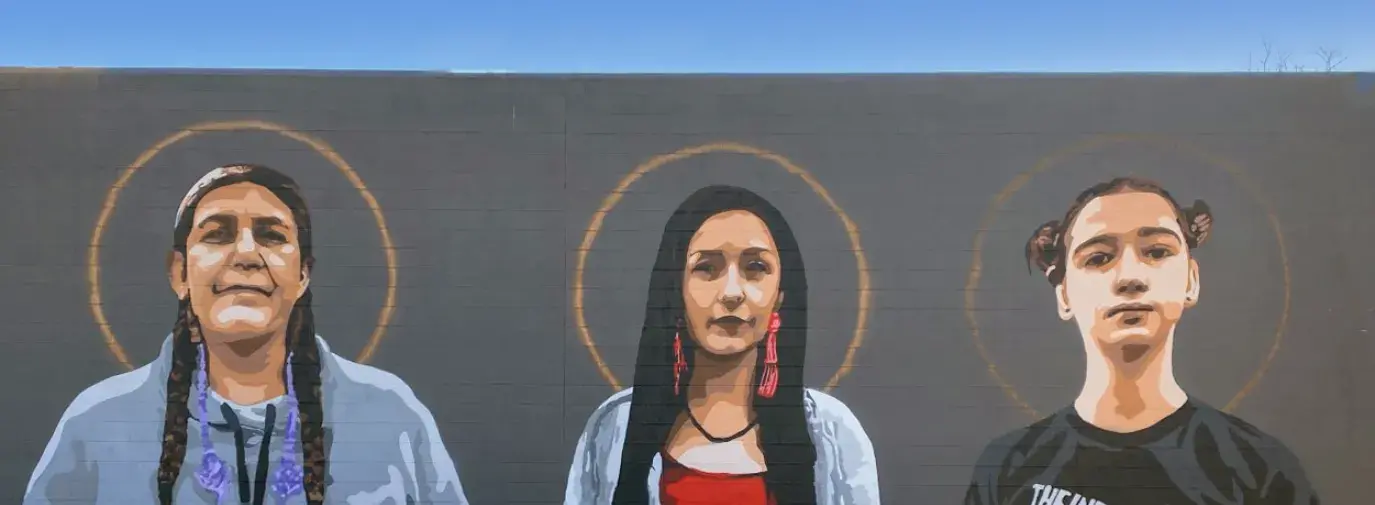
Small businesses aren’t just nice to support, they support local economies, fill needs, and create jobs. According to the Small Business Administration, small businesses account for 44% of US economic activity. But starting a business, to fill a community need or support a family, has historically and systemically been unavailable to Native American people.
Native American and Alaskan Native are the highest unbanked households at 16.3%, according to a 2019 FDIC survey. Reservations are often far from banks and ATMs and many have limited access to stable internet connections, limiting access to online banking.
What’s more, Native Americans have fought for tribal sovereignty (the right to self-govern) throughout centuries of oppression and genocide. Tribal sovereignty is recognized in the Constitution, yet it has historically been used to prevent Native communities from accessing capital.
Some banks and credit unions, especially those designated as Community Development Financial Institutions (CDFIs) for serving economically marginalized communities, are working towards improving these circumstances. They are offering financial products that create jobs, build businesses, and grow wealth for Native American communities.
Challenges to Conventional Lending
Shannon Ward [Northern Arapaho Tribe], senior vice president and chief lending officer of Native American Bank in Denver, Colorado, explains that tribes experience unique challenges to getting loans because of their land status. Native American Bank was started by ten tribes in 2001 and presently has 36 shareholders, 31 of which are tribes, tribal enterprises, or Alaskan Native corporations.
Using property as collateral is a common way to get a loan, but on some reservations, there is no private land ownership and some land is held in trusts by the Department of the Interior. Without being able to mortgage property for a loan, it is significantly harder to start a business.
Additionally, many conventional banks are ill-equipped to handle the nuances of tribal land policies as well, creating painstakingly long processes for both parties. These obstacles to getting capital are a contributing factor to why Native Americans have the highest poverty rate among US demographics at 25.4%, according to the 2018 US Census.
However, tribal nations that do manage to get past these challenges and bring pen to paper on a loan agreement, may also face the choice of whether to waive sovereign immunity.
Sovereignty vs. Lending
Ward explains that waiving sovereign immunity is another reason why tribes may be reluctant to enter lending agreements with conventional banks. This is a unique circumstance for Native American tribes—because reservation land is federally designated as “permanent tribal homelands,” a waiver is needed to grant permission for land to be used for other purposes.
Ward explains that big banks and conventional lenders typically require borrowers to waive their sovereign immunity across the board. With Native American Bank, paperwork is personalized to each situation, which means it only requires limited waivers of immunity for that transaction.
“[Native American Bank] was established with the specific intent to address those unique challenges that tribes, tribal enterprises, and individual business owners face when they’re trying to access capital,” she says. “Not only are we Native-owned, we are Native-led.”
Specificity and cultural competence are what make Native American Bank successful with its clients. Similarly, the CDFI Fund, a government agency that exists to grow historically underserved economies and communities, is working to make loans more accessible to Native financial institutions.
Making Capital Accessible to Native Communities
In 2022, the CDFI Fund announced a new focus to help Native lending institutions lend to their own communities, which will give tribes more power over their projects, instead of outside lenders having the power to choose what projects get funded.
The New Markets Tax Credit (NMTC) was established in 2000 to attract investment in low-income communities by providing tax credits to CDFIs and other mission-driven banks. The CDFI Fund handles distributing these tax credits. Between 2004 and 2020, the CDFI Fund recorded NMTC investments totaling $1.6 billion in Native American tribal lands and communities. These investments bolstered healthcare, education, infrastructure, and more.
The CDFI’s new plan is to refocus NMTCs from low-income communities to Native communities specifically, which will provide Native CDFIs and tribal entities with resources and training to release NMTC funds to their own communities.
Directing the resources and power of NMTCs to Native-owned and -led financial institutions is a step in the right direction for bridging the wealth and community development gap for businesses and tribal nations.
Funding for Community Health
Historically, Native American Bank has financed housing, hotels, and casinos for tribal nations. But the new trend is towards health and wellness clinics for reservation communities.
The federal government has an obligation to provide health services to reservations per treaty stipulations, but Congress has consistently underfunded the Indian Health Service (IHS) agency. During the height of the pandemic in 2020, the Navajo Nation had the third-highest per capita rate of Covid-19 in the country, with only 12 healthcare centers, serving over 244,000 Native Americans across Arizona, New Mexico, and Utah. Because Native communities are consistently underserved by US federal health care, communities take care into their own hands.
“We were really happy to close on a [behavioral health facility] project in North Dakota,” says Ward, adding that it will help address the opioid crisis in the community. “It’s a really unique project because it couples both New Market Tax Credits with a USDA guarantee.”
Health services are an investment in community health. Many clinics the bank has invested in are not on reservations, but are Native-led and -operated, such as clinics in Salt Lake City and childcare facilities in Denver.
Supporting Native Communities
Can you support Indigenous financial institutions if you are not Native American? Ward says “yes.”
Native American Bank serves clients across the country, both Native and non-Native.
“During the time of the Dakota Access Pipeline, we were approached by bank customers from all over the country because they didn’t want to bank at one of the big banks that supported the pipeline,” says Ward.
Whether your interest is in social and economic change or simply breaking up with a big bank, Green America’s Get a Better Bank tool can help you find a new financial institution. Many small financial institutions, including Native American Bank, have banking options, where you can set up an account, make deposits, withdrawals, and more, all digitally.
“Deposits allow us to continue to make loans that serve underserved communities,” says Ward. “As an individual or an organization, you can bank somewhere where your money does good.”







